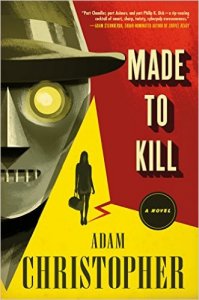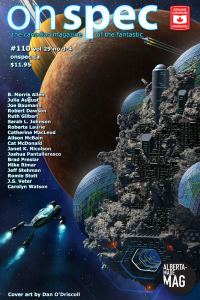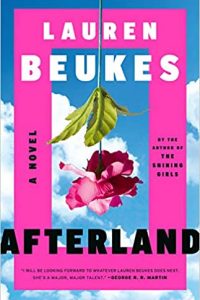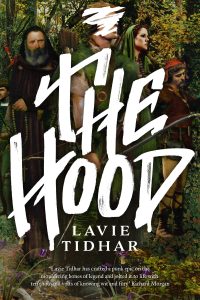Paul Di Filippo reviews Adam Christopher
Made to Kill, by Adam Christopher (Tor 978-0-7653-7918-4, $24.99, 240pp, hardcover) November 2015
 Adam Christopher’s first novel, Empire State, appeared only in 2011. In the short interval since, he fleshed out that dieselpunk duology with The Age Atomic; completed another series consisting of The Burning Dark and The Machine Awakes; produced two singletons, Seven Wonders and Hang Wire; and now has launched “The LA Trilogy” with Made to Kill. It’s a productivity worthy of one of the old pulpsters, or a Silverberg or a Malzberg or a Resnick. But readers must only hope it’s sustainable, and that he is not overtaxing his gifts. Those novels of his I have so far sampled have all been well done, and one would hate to see either a diminishment in quality or a halt in production entirely, due to burnout. It seems a shame that part of this super-fecundity might be attributable to marketplace realities. This is now the way you have to produce in order to sustain a career.
Adam Christopher’s first novel, Empire State, appeared only in 2011. In the short interval since, he fleshed out that dieselpunk duology with The Age Atomic; completed another series consisting of The Burning Dark and The Machine Awakes; produced two singletons, Seven Wonders and Hang Wire; and now has launched “The LA Trilogy” with Made to Kill. It’s a productivity worthy of one of the old pulpsters, or a Silverberg or a Malzberg or a Resnick. But readers must only hope it’s sustainable, and that he is not overtaxing his gifts. Those novels of his I have so far sampled have all been well done, and one would hate to see either a diminishment in quality or a halt in production entirely, due to burnout. It seems a shame that part of this super-fecundity might be attributable to marketplace realities. This is now the way you have to produce in order to sustain a career.
The first thing to mention about Christopher’s entertaining new book is that it belongs to a kind of retro-SF which I am starting to see cropping up more and more. I can’t quite call it dieselpunk, since to me that term refers to fantastical fiction set in some era identical to or analogous to our consensus reality years of 1935-1955. Christopher’s novel is set in the year 1965, and I suppose it might be called Atomic Age fiction. Or Sputnik Fiction. Or Space-Age Bachelor Pad Fiction. Personally, I have been thinking of it as Mad Men SF or New Frontier SF. The reference to the famous TV show should conjure up obvious images. But the “New Frontier” allusion is not only to JFK’s political era, but to the great graphic novel of that same name by Darwyn Cooke. And sometimes one finds Howard Chaykin working the same vein.
In any case, such fiction takes the extant technology of that era, along with the extant science fiction of that era, and recalibrates them and plays knowingly and ironically and sometimes even sincerely with these elements, to produce frissons both nostalgic and hip. Christopher’s novel exhibits all three characteristic stances, and delivers the goods.
Ray Electromatic is a unique robot, and in fact the last robot surviving a grand purge and dismantling of his cyber-brethren. Introduced in the Fifties, robots came to be resented and were scrapped en masse. (Shades of Herbert’s Butlerian Jihad.) But Ray was allowed to go on, under the protection of his creator, Dr. Thornton, who contributed his brain patterns as a template for Ray’s consciousness. Now Ray operates with his partner/controller, Ada, a giant mainframe AI who relies on Ray as her mobile extension. Lately, Ada has started hiring out Ray as not only a private eye, but a contract killer, since that latter business is more lucrative and feeds into Ada’s Prime Directive for survival.
Ray also operates under a curious constraint: his taped memory bank fills up after 24 hours of sensory input, and he starts each day as a blank slate, save for some hardwired essentials, his operating system more or less. Right away, we sense the postmodern Jonathan Lethem-style PI-with-a-disability riff, but it consorts well with the more classic venue.
One day a beautiful gal comes into Ray’s office, hires him to find and kill a certain Hollywood actor, and pays him off with a bag of gold ingots. This strange assignment leads Ray from the famous Hollywood hillside sign to a chichi club called the Temple of the Magenta Dragon, to Grauman’s Chinese Theater. Along the way are spies and bombs and mysterious gadgets and such perfectly named Hollywood types as Alaska Gray, Rico Spillane and Fresco Peterman.
Christopher does a fine job of plotting and mystery-novel misdirection. I don’t think you will unriddle the full set of enigmas before he is willing to disclose them. He does not stint the stefnal elements either, and Ray’s existential quandary hews to the best Asimovian heights. Moreover, Ray’s blithe homicidal nature harks back to a classic of the Sputnik era, Bester’s “Fondly Fahrenheit.”
The one area where I see some small deficiencies is in the Chandler homages. In his afterword, Christopher talks about Chandler being the inspiration for this novel. And while Ray does get off a few droll quips, Marlowe-style—“I assumed this was standard operating procedure for teenagers in an ice cream parlor when being given a free drink by a robot…”—the level of the metaphors and dialogue never comes close to Chandler’s brilliance, and Chandler’s noirish focus on corruption and decadence, greed and callousness, is abandoned in favor of the admittedly fascinating espionage shenanigans.
At the end of the book, Ray is left in a new condition that portends even larger adventures in books two and three of the LA Trilogy. And given Christopher’s track record, we should not have to wait long for them!






